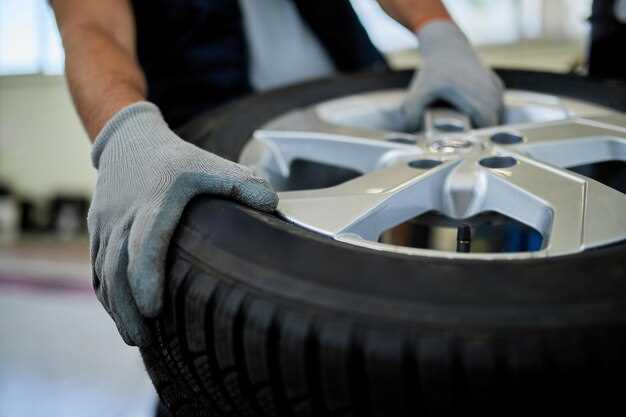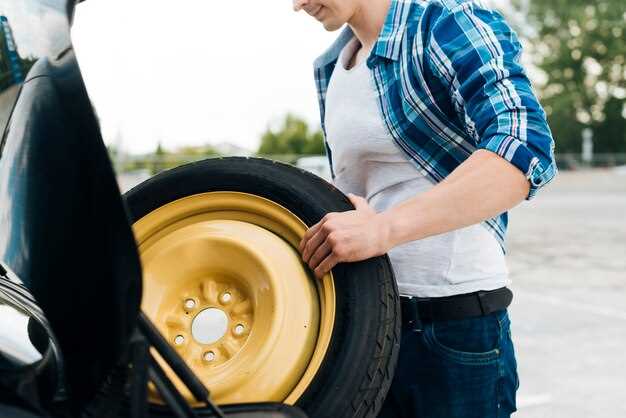
Tires are one of the most crucial components of any vehicle, serving as the only point of contact with the road. However, uneven tire wear can significantly compromise safety, handling, and fuel efficiency. Understanding the causes behind this phenomenon is essential for any vehicle owner seeking to extend tire life and ensure optimal performance.
Uneven tire wear can stem from a variety of factors, including misalignment, improper inflation, and the quality of road surfaces. Each of these issues can lead to premature tire degradation and, if not addressed, potentially result in costly replacements and dangerous driving conditions. By identifying the underlying causes, drivers can take proactive measures to mitigate these problems and enhance overall vehicle performance.
In this article, we will explore the primary reasons for uneven tire wear and provide practical prevention tips. By implementing these strategies, vehicle owners can maintain their tires better and ensure a smoother and safer driving experience.
Impact of Tire Pressure on Wear Patterns
Tire pressure plays a crucial role in how tires wear over time. Maintaining the correct tire pressure is essential for ensuring even wear patterns, optimal handling, and overall vehicle performance.
Under-inflation of tires leads to increased wear on the outer edges of the tread. As the tire rolls, the sidewalls flex more than intended, causing excessive heat buildup and accelerated deterioration. This uneven wear results in a shorter tire lifespan and can compromise vehicle safety, as traction and handling may be significantly reduced.
On the other hand, over-inflation causes the center of the tire tread to wear more rapidly. When a tire is inflated beyond the manufacturer’s recommended pressure, it becomes stiffer and less able to absorb road shocks. This leads to a smaller contact patch with the road surface, which increases wear in the center of the tread. Eventually, this can result in a loss of grip and stability, especially in wet conditions.
Maintaining the recommended tire pressure not only promotes even wear and extends the tire’s lifespan but also contributes to improved fuel efficiency. Properly inflated tires create less rolling resistance, requiring less energy to move the vehicle. Regularly checking tire pressure, ideally monthly and before long trips, is a simple yet effective preventive measure.
In summary, both under-inflation and over-inflation significantly affect tire wear patterns. Keeping tires at the correct pressure helps ensure uniform wear, enhances safety, and improves fuel economy. Regular monitoring and maintenance are key to maximizing tire performance and longevity.
Alignment Issues Leading to Tire Damage
Proper wheel alignment is essential for optimal tire performance and longevity. When a vehicle’s wheels are misaligned, it can lead to uneven tire wear and potentially cause serious safety issues. Understanding the causes and consequences of alignment issues is crucial for maintaining your tires.
Common causes of misalignment include:
- Impact from Potholes: Driving over potholes or road debris can jolt the suspension system, leading to misalignment.
- Accidents: Collisions, even minor ones, can disrupt the alignment of the wheels.
- Worn Suspension Components: Parts such as bushings, ball joints, and tie rods can wear down, affecting wheel alignment.
- Improper Installation: New tires or suspension parts must be installed correctly to maintain alignment.
Misalignment can manifest through various signs, including:
- Uneven Tire Wear: Tires may wear more on the inner or outer edges, leading to quicker replacement needs.
- Pulling to One Side: The vehicle may drift or pull towards the left or right while driving straight.
- Steering Wheel Off-Center: When the steering wheel is not centered while driving, it indicates alignment issues.
- Vibration or Noise: Misalignment can cause vibrations and unusual noises when driving.
To prevent alignment-related tire damage, consider the following tips:
- Regular Inspections: Have your alignment checked at least once a year or whenever you notice irregular tire wear.
- Immediate Repairs: Address any suspension issues or noticeable signs of misalignment promptly to avoid further damage.
- Proper Tire Inflation: Maintain correct tire pressure as low or high pressure can exacerbate alignment problems.
- Drive Carefully: Avoid potholes and rough roads whenever possible to reduce the impacts on your vehicle’s alignment.
By understanding alignment issues and implementing preventive measures, you can significantly extend the life of your tires and enhance overall vehicle safety.
The Role of Suspension Components in Tire Longevity
The suspension system of a vehicle plays a crucial role in ensuring even tire wear and overall tire longevity. It is responsible for maintaining proper contact between the tires and the road, absorbing shocks from uneven surfaces, and providing stability during driving maneuvers. An effectively functioning suspension helps prevent tires from experiencing excessive wear due to misalignment, uneven pressure, and improper angles.
Key components of the suspension system include shocks, struts, control arms, and bushings. Worn or damaged shocks and struts can lead to excessive bouncing and instability, which may result in uneven tire wear. They are essential for dampening road shocks and maintaining consistent contact between the tire and road surface. If these components are worn out, tires are likely to wear more on one side or develop flat spots.
Control arms and bushings connect various suspension parts and help maintain proper wheel alignment. If these components are damaged or deteriorated, it can lead to misalignment of the wheels. Misalignment may cause uneven tread wear, typically seen as excessive wear on the inner or outer edges of the tires. Regularly checking and replacing worn control arms and bushings helps ensure tires are aligned correctly.
Regular maintenance of suspension components is essential for prolonging tire life. Periodic inspections and prompt replacement of worn parts help prevent issues that can result in uneven tire wear. Furthermore, ensuring the vehicle’s alignment is regularly checked and adjusted as needed maintains optimal tire contact with the road, promoting even wear and extending tire service life.
In summary, the suspension system significantly influences tire longevity. By ensuring that suspension components are in good condition and properly maintained, vehicle owners can mitigate uneven tire wear, enhance handling performance, and ultimately extend the life of their tires.
Driving Habits That Accelerate Tire Wear
Several driving habits can significantly contribute to uneven tire wear, thereby shortening the lifespan of your tires and affecting vehicle performance. Understanding these habits is crucial for maintaining optimal tire health.
Aggressive Acceleration and Braking: Rapid acceleration and sudden stops place excessive stress on tires, leading to increased wear. This type of driving generates high temperatures, which can cause the tread to deteriorate more quickly. Smooth and gradual acceleration, along with controlled braking, helps distribute wear evenly.
Sharp Turns and Cornering: Taking corners aggressively can cause tires to flex and wear down on the outer edges. This is particularly pronounced in vehicles with inadequate alignment or overinflated tires. Maintaining a steady speed and reducing cornering speed can minimize uneven wear.
Overloading the Vehicle: Carrying more weight than the vehicle’s recommended load can lead to excess pressure on the tires, resulting in faster tread wear. Always adhere to the manufacturer’s guidelines regarding load capacity to ensure tires wear evenly.
Driving on Poorly Maintained Roads: Frequent use of rough or potholed roads increases the likelihood of tire damage and uneven wear. Strive to avoid such roads when possible, and if you must drive on them, do so at a reduced speed to lessen the impact on your tires.
Neglecting Tire Maintenance: Regularly checking tire pressure and tread depth is crucial. Under- or over-inflation can lead to uneven wear patterns. Proper maintenance, including timely rotations and alignments, is essential for prolonging tire life.
Implementing mindful driving habits not only improves tire longevity but also enhances overall vehicle safety and efficiency.
Seasonal Changes and Their Effects on Tire Condition
Seasonal changes significantly impact tire condition, influencing both performance and wear patterns. Each season presents unique challenges due to varying temperatures, road conditions, and environmental factors. Understanding these changes can help drivers maintain their tires effectively and prevent uneven wear.
In winter, low temperatures can cause tires to harden, reducing their flexibility and grip. The risk of skidding increases on icy or snowy roads. Additionally, the use of winter tires is crucial as they are designed specifically to perform better in cold conditions. Failing to switch to appropriate tires can lead to increased wear and decreased handling performance.
Spring introduces thawing and fluctuating temperatures, which may lead to potholes and road debris emerging after winter. Hitting these hazards can damage tires, leading to bulges or cuts. Regular inspections during this season are necessary to catch any emerging issues early.
Summer brings higher temperatures and increased road friction. This aspect can lead to rapid tire wear if the air pressure is not regularly maintained. Over-inflation is another concern, as it can cause the center of the tread to wear more quickly than the edges. Maintaining proper tire pressure and monitoring tread depth are essential during hotter months.
Fall presents its own set of challenges, with leaves creating slippery conditions when wet. The reduction in traction can lead to premature wear if the tires are not adequately suited for the season. Preparing for winter by ensuring tires are suitable for the upcoming colder months is crucial during this transition.
| Season | Effects on Tire Condition | Prevention Tips |
|---|---|---|
| Winter | Tires harden, reducing grip; increased risk of skidding | Use winter tires; check pressure frequently |
| Spring | Road hazards emerge; potential for damage to tires | Inspect for cuts/bulges; avoid potholes |
| Summer | Higher temperatures lead to increased wear | Maintain proper tire pressure; check tread depth regularly |
| Fall | Reduced traction due to wet leaves; transition to winter tires needed | Ensure tires are suitable for winter; check for uneven wear |
By understanding the effects of seasonal changes on tire condition and adhering to proactive maintenance tips, drivers can enhance tire longevity and improve safety on the road.
Routine Maintenance Tips to Prevent Uneven Wear

Regular tire rotation is essential to ensure even wear across all tires. It is recommended to rotate tires every 5,000 to 7,500 miles or as specified in your vehicle’s owner manual. This practice redistributes the wear by changing the position of the tires, helping to extend their lifespan.
Maintaining proper tire pressure is crucial in preventing uneven wear. Under-inflated or over-inflated tires can lead to excessive wear on specific parts of the tire. Check tire pressure at least once a month and before long trips, ensuring that it matches the manufacturer’s recommended levels.
Aligning your vehicle’s wheels is another important aspect of routine maintenance. Misalignment can cause tires to wear unevenly and lead to handling issues. It is advisable to schedule an alignment check whenever you notice your vehicle pulling to one side or after hitting a pothole.
Inspecting tires for signs of damage or wear regularly can help identify potential issues early. Look for uneven tread wear, cracks, bulges, or foreign objects lodged in the tire. Addressing these problems promptly can prevent further damage and ensure safe driving conditions.
Balancing your tires is equally important. Imbalanced tires can result in vibrations and uneven distribution of wear. Scheduling a balance check whenever new tires are installed or rotated will help maintain tire health and improve overall vehicle performance.
Lastly, regular inspections of your vehicle’s suspension and braking systems can contribute to even tire wear. Worn-out suspension components or brake issues can affect how weight is distributed on the tires. Keeping these systems in good condition will promote even contact with the road and maintain tire quality.















